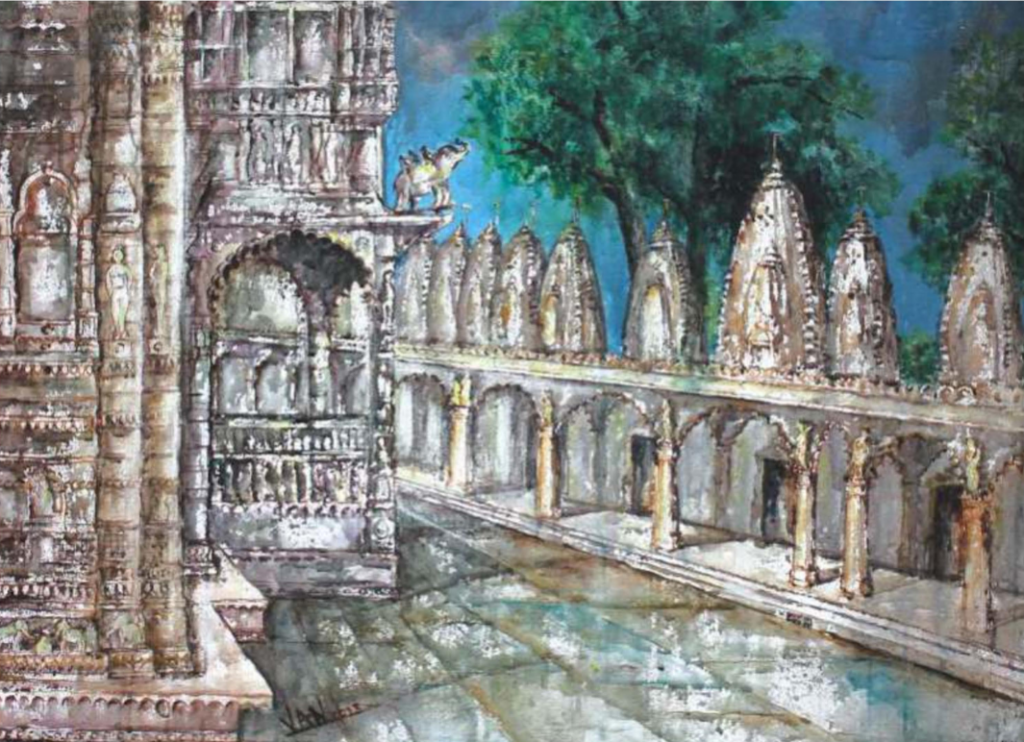~Norman Foster When Norman Foster a name synonymous with innovation, sustainability, and architectural precision said, "I think you never stop learning," he wasn’t just offering a motivational soundbite. He was summarizing the very ethos of architectural practice. Aerial view of Apple Park, the corporate headquarters of Apple Inc., located in Cupertino, California Architecture is not a destination; it is …
~Norman Foster

Table of Contents
- 1. The Myth of the All-Knowing Architect
- 2. Learning Through Collaboration
- 3. Technology: The Forever-Changing Toolbox
- 4. Learning from History and Place
- 5. The Site is a Syllabus
- 6. Learning from Mistakes (Especially the Ones You Built)
- 7. Learning from Users
- 8. Learning Through Teaching
- 9. Learning to Unlearn
- 10. Learning is the Antidote to Ego
- Modern Examples That Embody Continuous Learning
- A Personal Take: The Blank Sheet as a Blackboard
- To Close: A Sketchbook with No Last Page
When Norman Foster a name synonymous with innovation, sustainability, and architectural precision said, “I think you never stop learning,” he wasn’t just offering a motivational soundbite. He was summarizing the very ethos of architectural practice.

Aerial view of Apple Park, the corporate headquarters of Apple Inc., located in Cupertino, California
Architecture is not a destination; it is a journey. A dynamic, iterative, and humbling one. And if one of the world’s most accomplished architects, who has shaped skylines across continents, can still claim to be learning, then surely for the rest of us, learning isn’t optional it’s foundational.
1. The Myth of the All-Knowing Architect
The stereotype of the architect as the omniscient master-planner, someone who steps onto a site and instantly knows what to do is charming, but misleading. In truth, no two projects are ever the same. No two sites, no two clients, no two cultures, no two briefs. An architect’s success depends not on how much they already know, but on how deeply they’re willing to keep learning.
You learn from the client’s lived experience. You learn from the land. You learn from failed details, unexpected weather patterns, and overly optimistic assumptions. Every project is a prototype. Every design is a hypothesis. The profession demands evolution.
Take Foster’s own journey from the high-tech aesthetic of the HSBC Building in Hong Kong to the sustainability-infused Apple Park in Cupertino his work shows a progression not just of style, but of understanding.
2. Learning Through Collaboration
In architecture, no one designs alone. Architects are constantly learning from engineers, landscape designers, artists, sustainability consultants, contractors, craftspeople, even municipal clerks. Every conversation expands our vocabulary.
For instance, when Foster + Partners worked on the Millau Viaduct in France, they collaborated with structural engineer Michel Virlogeux. The result wasn’t just a bridge it was an elegy to elegance and economy. That feat wasn’t possible without deep cross-disciplinary respect and a willingness to absorb new ways of thinking.

Millau Viaduct France
In this profession, collaboration isn’t a compromise. It’s a classroom.
3. Technology: The Forever-Changing Toolbox
Foster was among the earliest adopters of Building Information Modeling (BIM) and parametric design tools way before they became architectural buzzwords. He understood that tools don’t replace creativity; they augment it.
Architecture students today learn Rhino, Grasshopper, Revit, Twinmotion tools that didn’t exist a few decades ago. And 10 years from now? Those tools will likely feel archaic.
As architects, our learning isn’t only about design theory or spatial strategy. It’s also about keeping up with tools that allow us to test ideas faster, visualize better, and build more sustainably.

The Bloomberg Headquarters in London
Take The Bloomberg Headquarters in London, one of Foster’s most environmentally advanced buildings. It wasn’t just designed with style; it was designed with sensors, responsive systems, and data. Without engaging with emerging technologies, that building wouldn’t have achieved a BREEAM rating of “Outstanding.”
4. Learning from History and Place
While Foster is the poster child of futuristic design, he is deeply rooted in contextual learning. His projects don’t parachute into a site they respond to it.

The Reichstag Building, Berlin
The Reichstag renovation in Berlin is a masterclass in learning from history. Foster didn’t erase the building’s troubled past; he worked with it. He retained the outer shell, introduced transparency as a metaphor for democracy through the glass dome, and made it energy-efficient to reflect the nation’s modern aspirations.
Architecture that disregards history risks becoming sculpture. Architecture that learns from history becomes culture.
5. The Site is a Syllabus
Every site is a teacher. The soil speaks of foundations, the wind of orientation, the sun of shading, and the topography of movement. Whether you’re building in snowy Finland or humid Chennai, the site rewrites your design vocabulary.

Masterplan Masdar City, Abu Dhabi, United Arab Emirates
In Masdar City, UAE, Foster + Partners tried to reinterpret the traditional Middle Eastern urban fabric using narrow shaded streets and wind towers in a hypermodern context. They didn’t copy the old methods blindly. They learned from them and adapted them to meet futuristic goals.
This is the essence of architectural learning: not to repeat, but to reinterpret.
6. Learning from Mistakes (Especially the Ones You Built)
Unlike a novelist who can delete a paragraph or a filmmaker who can reshoot a scene, architects live with their mistakes in concrete and steel. And believe me, nothing builds humility or understanding like standing inside a space that didn’t work the way you hoped it would.
Maybe the orientation made a room too hot. Maybe the atrium didn’t encourage interaction. Maybe the café’s acoustics are awful. These aren’t “failures” in the punitive sense; they are feedback loops. Each mistake is a post-occupancy evaluation whether formal or emotional.
Foster has famously revised or iterated on his own ideas. His early designs were industrial and rigid. Over time, they became more fluid, more biomorphic, more nuanced. That’s the result of not just age, but of ongoing reflection.
7. Learning from Users
You may design the perfect bench. But if no one ever sits on it, you’ve missed the mark. The user is the ultimate litmus test of success.

The Thames Hub Airport vision
Foster’s Thames Hub Airport proposal wasn’t built but it raised critical questions about user experience, airport planning, and future mobility. It showed that even unbuilt projects can be fertile ground for learning.
User-centered design isn’t just about ergonomics. It’s about empathy. It’s about going beyond aesthetics to ask: Does this space invite use? Does it nurture dignity? Does it delight?
8. Learning Through Teaching
Norman Foster has always emphasized education not just of himself, but of others. He’s lectured, mentored, and supported institutions that promote design thinking.
As an architect, teaching is often where your ideas clarify themselves. Explaining a detail to a student or junior architect forces you to re-express the why behind the how.
Likewise, every critique is a mirror. Students don’t just learn from professors, professors relearn from students. It’s a feedback loop of inspiration.
9. Learning to Unlearn
Perhaps the hardest lesson for an architect is to unlearn what once felt foundational.
You might have loved axial symmetry until you realized life isn’t linear. You might have worshipped the “clean white box” until you saw the vibrancy of informal settlements. You might have designed for cars until you understood the power of walkability.

Norman Foster’s Sainsbury Centre
Foster’s own shift from industrial high-tech to organic sustainability is proof of this. In his early career, the Sainsbury Centre for Visual Arts (1978) exemplified machine-like clarity. Decades later, Apple Park speaks in circles and groves. His own journey shows how learning sometimes means letting go.
10. Learning is the Antidote to Ego
In a field where authorship is prized and signature styles are celebrated; there’s a temptation to become a “brand” instead of a student. But buildings don’t care about ego. And neither do their users.
The humility to keep learning is what separates the great architects from the merely good ones. Foster’s practice has spanned over five decades and yet, every new brief is approached with curiosity, not arrogance.
This is also a lesson in professional longevity. The architect who believes they’ve “arrived” will soon find themselves irrelevant. The architect who keeps learning will always be in motion and motion is life.
Modern Examples That Embody Continuous Learning
- Francis Kéré (Gando Primary School, Burkina Faso): Kéré’s early work combined traditional clay techniques with modern structural thinking. Over time, he refined this approach across continents, learning from both vernacular wisdom and global innovation

Gando Primary School, Burkina Faso
- Shigeru Ban (Cardboard Cathedral, Christchurch): Known for experimenting with unconventional materials, Ban constantly questions what defines permanence and luxury in architecture. His career is a testament to material curiosity.

Cardboard Cathedral, Christchurch
- BIG – Bjarke Ingels Group (Amager Bakke Waste-to-Energy Plant, Copenhagen): They’ve turned industrial infrastructure into community playgrounds. Why? Because they learned that engagement can be engineered, not just designed.

Amager Bakke Waste-to-Energy Plant, Copenhagen
A Personal Take: The Blank Sheet as a Blackboard
Every time an architect stares at a blank page, they’re not starting from zero they’re starting from experience. But experience isn’t a full stop. It’s a comma in an ongoing sentence.
As you grow in practice, you begin to learn from softer voices the user who thanks you for a cozy alcove, the child who turns a ramp into a race track, the old man who naps on a bench you designed. These are the true professors of architecture.
Norman Foster’s statement isn’t just about academic learning. It’s about experiential learning. About observing with wonder. About iterating without ego. About designing with humility.
In architecture, the learning never ends. That’s not a weakness it’s our greatest strength.
To Close: A Sketchbook with No Last Page
So next time you complete a project, don’t file it away with a sense of finality. Revisit it. Observe it. Learn from it.
Ask yourself:
- What did this space teach me?
- What would I do differently next time?
- What surprised me?
Because in the end, the truly great architects are not those who claim mastery, but those who remain masterful learners.
Just like Norman Foster said: “I think you never stop learning.”
And thank goodness for that. Otherwise, this profession would be pretty boring, wouldn’t it?





